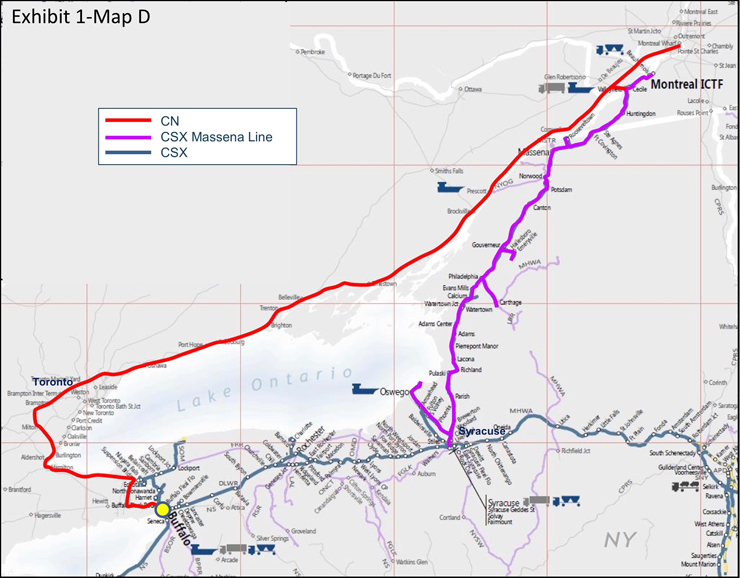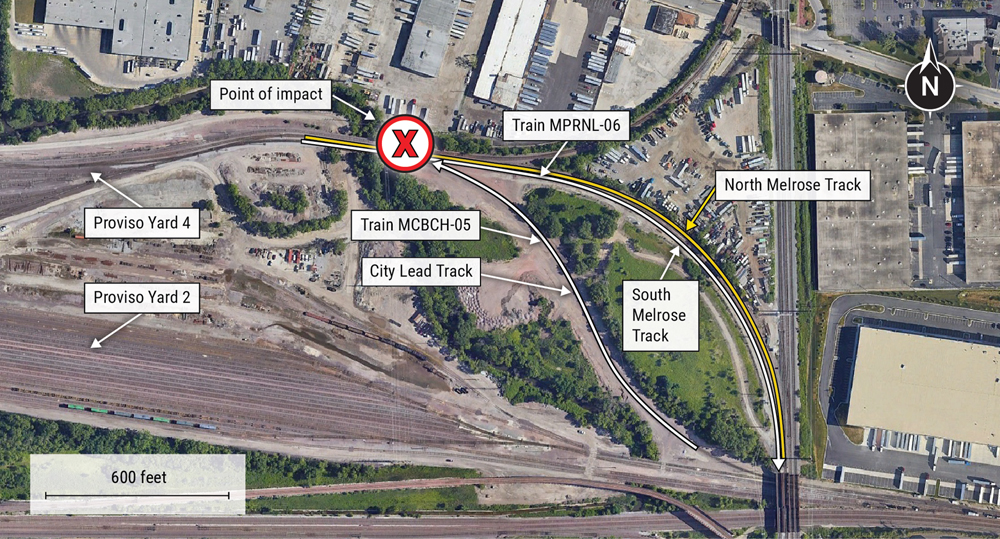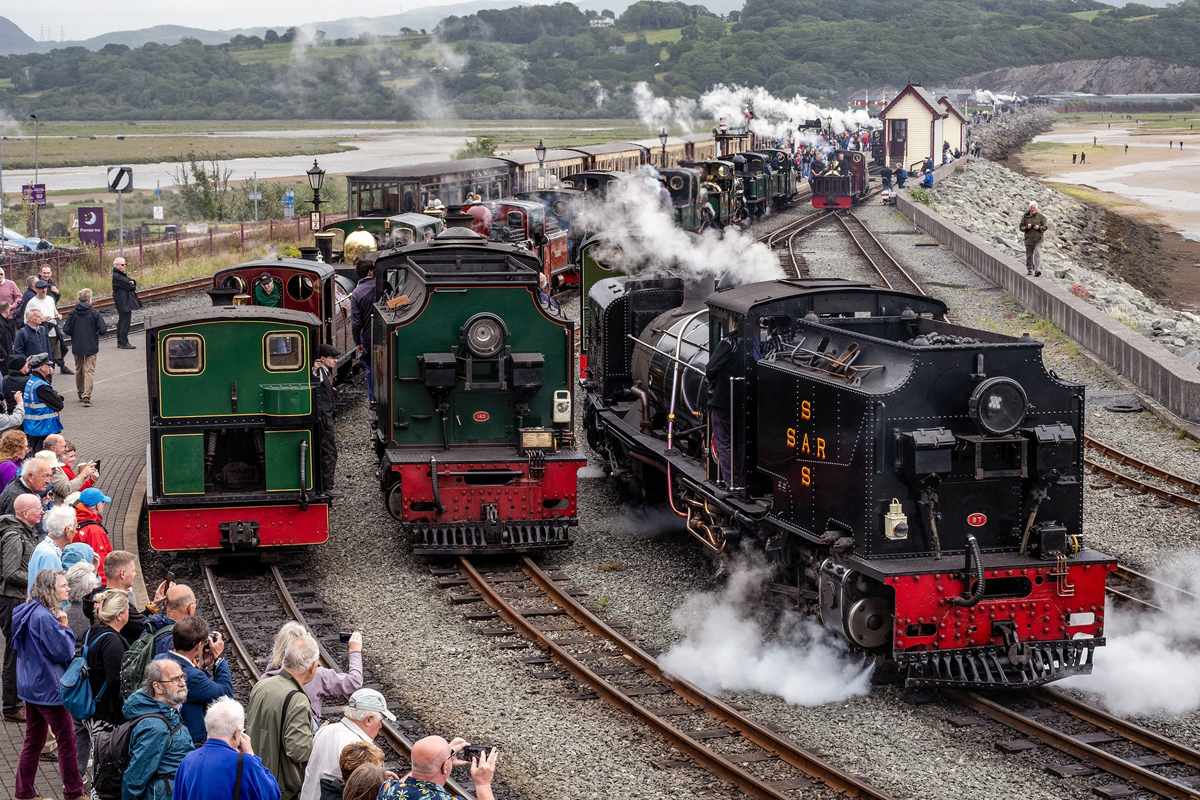WASHINGTON — Federal regulators on Monday approved Canadian National’s acquisition of CSX Transportation’s line linking the Montreal area with Syracuse, N.Y., a deal the railroads say will improve service for cross-border traffic.
The U.S. Surface Transportation Board decision, effective May 21, rejected numerous conditions sought by various parties, including short line Finger Lakes Railway’s attempt to gain direct interchange with CN in the Syracuse area.
But the board did order CSX and CN to eliminate a provision in the sale agreement that would bar CN from ever negotiating interchange in the Syracuse area with Finger Lakes and the New York, Susquehanna & Western.
The Massena Line sale totals 278.1 miles between Beauharnois, Quebec, and Woodard, N.Y., including 41.8 miles of trackage in Quebec and branch lines and spurs on both sides of the border. Among them: CSX’s 31-mile Fulton Subdivision.
CN will house the U.S. trackage under its Bessemer & Lake Erie Railroad subsidiary and employ 53 people, up from the 50 CSX currently employs on the line.
The line sale will move the CN-CSX revenue interchange to Woodard, N.Y., just north of Syracuse, from the current location at Huntingdon, Quebec. From an operational perspective, however, the railroads will exchange traffic at CSX’s Dewitt Yard in Syracuse and CSX’s Belle Isle Yard near Solvay, N.Y.
New CN through trains M327 and M326, which will carry mixed manifest and intermodal traffic, will run between CN’s Taschereau Yard in Montreal and Dewitt.
The trains will replace two pairs of trains CSX currently uses to handle through traffic, which includes Selkirk-Massena, N.Y., trains Q620 and Q621 as well as a pair of transfer jobs, B798 and B799, that run between Massena and Huntingdon.
The operational changes will reduce cross-border transit time by a day.
CSX and CN in October launched joint intermodal service linking the ports of Philadelphia and New York and New Jersey with Montreal and Toronto. The Montreal traffic moves via the Massena Line, and the line sale will greatly improve CN’s length of haul for the new intermodal traffic. [See “CN and CSX team up for new interline intermodal service linking Canada and Northeast,” Trains News Wire, Aug. 9, 2019]
The line sale is part of CSX’s ongoing effort to spin off low-density routes that are not considered core to its system. The route was among those put out to bid in 2018.















Yes you,re right Charles from Montreal to Albany and south to connect with CSX at the port of Albany or even to the Selkirk yard on the CP rail line formally the Delaware & Hudson , and also they have a connection with Norforlk & Southern at the former Glenville Yard since CP Rail sold the former D & H line that runs from Schenectady NY. to Binghamton NY. to Norforlk & Southern , plenty of connections ,North – South -East to West period
A straight line from NYC to Montreal goes through Albany not Syracuse. The CP must be napping. They own the direct route.
For CN to get direct connection to NYSW and Finger Lakes, a facing point crossover and connection switch would have to be added to west side CP 291, on Chicago Line.
William McDonald:
The route has a fairly complex history. The line from Syracuse to Massena was NYC, and at one time crossed the St.Lawrence River to Cornwall and on to Ottawa. This latter part was abandoned with construction of the St Lawrence Seaway in the late 1950s. From Massena to Huntingdon was at one time CN trackage, that continued east to Montreal. East of Huntingdon was abandoned several decades ago and I believe the Massena-Huntingdon segment was sold to Conrail. CN is in effect re-acquiring it.
The segment from Huntingdon through Valleyfield to Beauharnois formed part of the NYC route from Utica to Montreal. It branched off from the line to Lake Placid at Lake Clear Jct and headed north through Malone and across the border. At some point, likely ca1960, the segment south of Malone was abandoned in favour of trackage rights over the CN from Massena to Huntingdon. Later the stub to Malone was also abandoned. I am not sure of the status of the line east of Beauharnois to the junction with CP near Montreal. It has been out of service for many years but may not have been formally abandoned.
At Valleyfield the NYC line crossed the CN line from Coteau (on the north side of the St.Lawrence River) that ran eastwards to Cantic and Rouses Point. Trains use this CN bridge to reach CN’s main Montreal-Toronto line. The portion east of of Valleyfield has also been abandoned for several decades now.
Some auto plants do get containers directly by rail. NS picks up and sets out double stacks at the Ford plant at Fairlane. Honda also gets containers by rail in the Marysville, OH, area. The inland port at Greer, SC, is adjacent to the BMW plant there. I think that was the main reason for building it at that location. I’m sure there are others. I can see numerous advantages to customers having their own lifts.
GREGG Question, do you know of a case where a shipper has its own container lift?
Possibly the auto plants (Hyundai, Subaru, Toyota, Honda, Nissan etc.) — I’ve never specifically heard of such.
@Charles Landey I understand that ADM in Decatur has a lift onsite used to load ocean cans with grain or DDGs for backhaul by CN to BC and export. The advantage there is this commodity tares out quickly from a highway dray axle load limit perspective, and can load heavier if direct to rail. May or may not need to be restricted from the top level of a double stack. Not sure where I read this or whether still active on the age of trade war but it made sense.
“Approval of the Transaction is further subject to the condition that B&LE and CSXT modify or eliminate section 5.14(b) of the PSA governing this Transaction to address the Board’s concerns described above.”
What STB did was require CN/CSX to remove the “never” requirement (5.14) of the possibility of direct interchange. There is no guarantee CN/CSX won’t fight tooth-and-nail to keep that from happening. In fact, the dissent from one STB board member over this “condition” is incredible as it is suggested the “condition” may scuttle the whole deal or lead to a chilling effect for future such transactions.
Fortunately the STB removed the anti-competitive clause limiting CN interchange with with Finger Lakes and the New York, Susquehanna & Western.
I think one thing to watch is Amazon is building a 3.8M sq ft warehouse (reportedly one of the largest such in the world) on a 100+ acre former golf course near Woodard. There are industrial sidings that are very close to the warehouse, ending right across the road from the new warehouse. It will be interesting if CN eventually delivers cuts of containers filled with Chinese trinkets to the Amazon facility, bypassing drayage.
ALL – As far as I know the Japanese auto plants do have rail spurs – for parts produced in places like Michigan and for finished auto haulaway. That I know of, containers from Japan or Korea are drayed. I’d like more information if anyone has such.
An article in a recent TRAINS-MAG edition talked about the coming demise of the boxcar fleets. So there might go the hi-cube boxcars carrying auto parts out of Michigan for auto assembly plants around USA both American-owned and foreign transplants.
It’s been a long time – a very long time – since I lived in Detroit. Way back then GM plants would see a lot of GTW hi-cubes. Ford plants would see Chessie hi-cubes. Chrysler wasn’t in that game; it had a captive fleet of blue (or later bare aluminum) semi-trailers with Chrysler pentastar logos running all over Detroit and across the bridge to Canada. About twenty years ago I’d see Daimler Chrysler markings on some trailers. Now under Fiat ownership I have no idea if the company still has a private fleet of semis – I haven’t spent much time in Ohio, Michigan or Ontario.
If memory serves many decades ago Chrysler semis were hauled by company cabs built by Fargo, the little-known heavy-haul division of Dodge trucks. When the long-forgotten Fargo brand was discontinued, the company bought cabs from other manufacturers but obscured the nameplates. All this is from hazy memory. A little corner of my memory – I might be totally wrong – was that Fargo cabs were built somewhere in Canada.
psr at work, get rid of everything
Adding to what John Sutherland said, another significant part of this line’s history that’s largely now forgotten was the role that Rutland’s NY division played. Back in the 1950’s, much of the Central’s traffic would travel Rutland rails between Norfolk and Malone before continuing on NYC trackage to Canada.
So much so that when abandonment came, Trains Magazine even reported that the Central was considering purchasing the Rutland between those two points (Which of course never came to pass; Ultimately, only Ogdensburg to Norfolk was saved and remains in operation today as the New York & Ogdensburg Railway).
Charles, The Amazon warehouse is a 5 story building and is ~4x larger than anything they currently operate in the US, as reported by the local news. As I understand this is not for local business, but rather to supply fulfillment centers in the northeast. I only speculate… Amazon has changed the landscape with everything the touch..
Rail service here is largely Chinese trinkets coming in on stack trains and garbage trains going out from NYC, LI, NJ, etc to incinerators and landfills. There is the occasional carload freight train.
Charles,i was told that Eastman chemicals in Tennessee has a container lift now that was a long time ago.
STB told CSXT & B&LE to remove the paragragh (#5.14) that would have restricted interchange of B&LE with FGLK & NYSW.
Is there any real material harm to CSX to allow NYS&W and FGLK interchange in Syracuse? Is there someplace CN gets to more efficiently than CSX? This is one of the very few times a local bully (Schumer, Cuomo, etc.) can step in and declare such interchange as good for the local economy and demand it proceed.
Gives CN a route around FN land in Belleville, great move!
PSR at its finest, give territory away to your competitors and complain when car numbers are down. Oh, w.t.h. what else can we sell…oh my
ANDREW —- short answer is that CPR owns that route.
AFAIK CSX Emplyees are protected to boot. A win in any book.
One railroad’s lemons are another railroad’s lemonaide!
Question: Why are they not using the old D&H route from Montreal to the Albany area? It would seem to cut off substantial mileage.
Can someone fill us in on details of New York Central’s operation into Montreal. They did access CP via,Adirondack Jct. at the south end of CP’s St Lawrence River bridge. I would,think therefore thatnNYC owned trackage in Quebec
Good for CNR, the same railroad that strung together a dog’s breakfast of secondaries and cast-offs in Wisconsin and turned them into a booming main line.
Robert, there is no competition between CSX and CN that is being affected by this transaction, it’s basically just moving the interchange points between the two railroads to a more efficient location for both and is actually an improvement for both carriers.